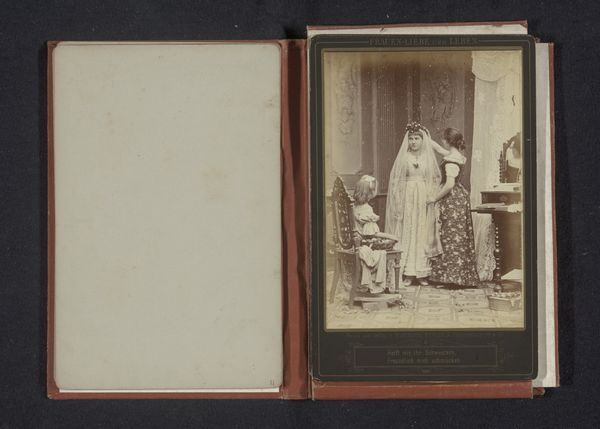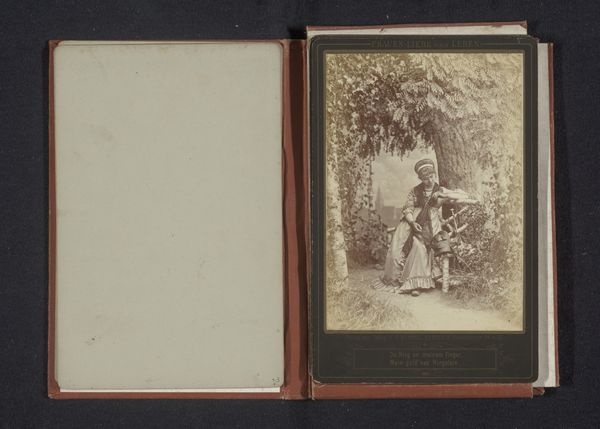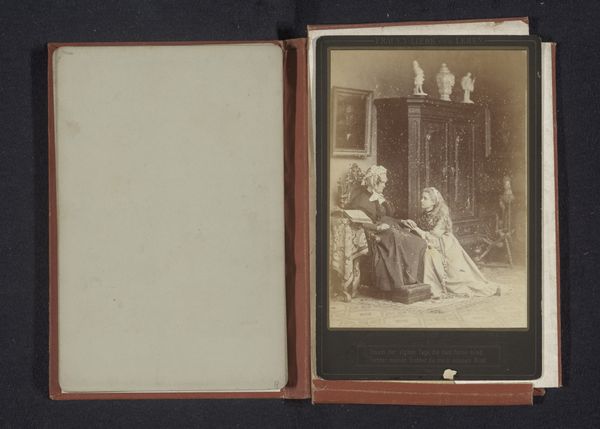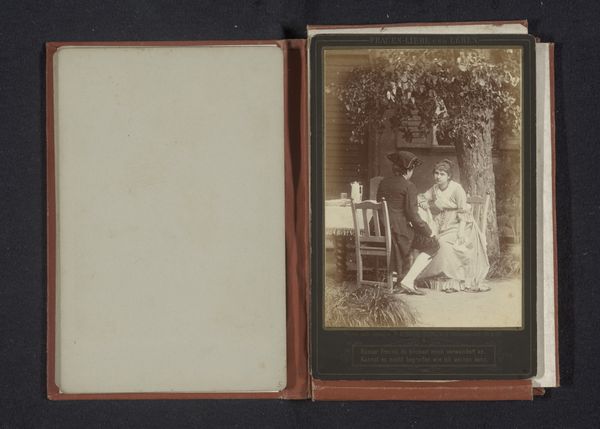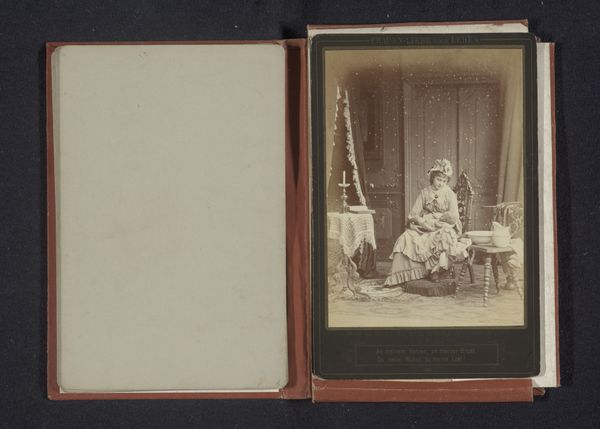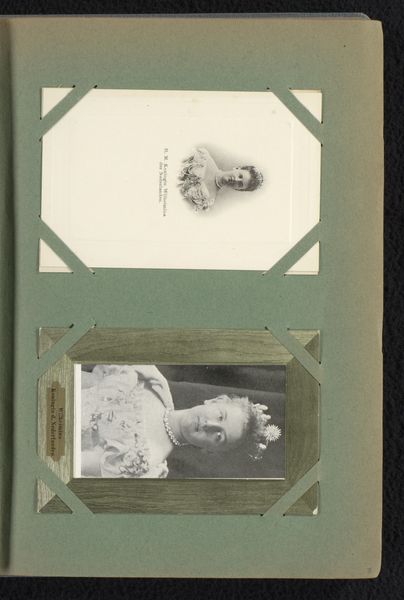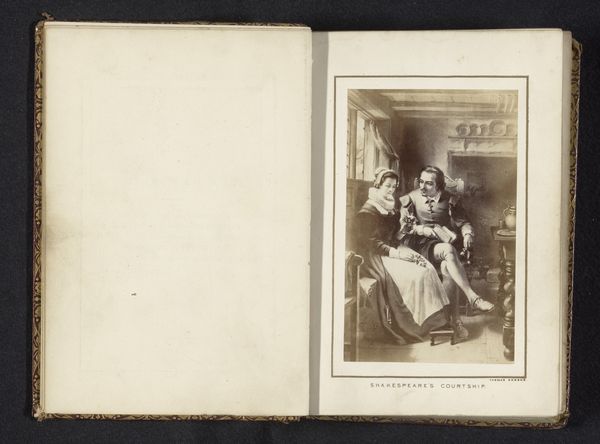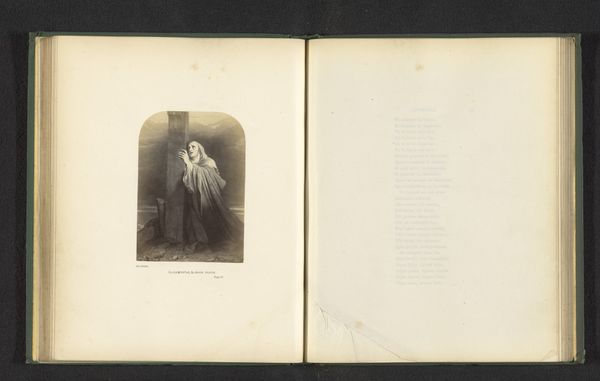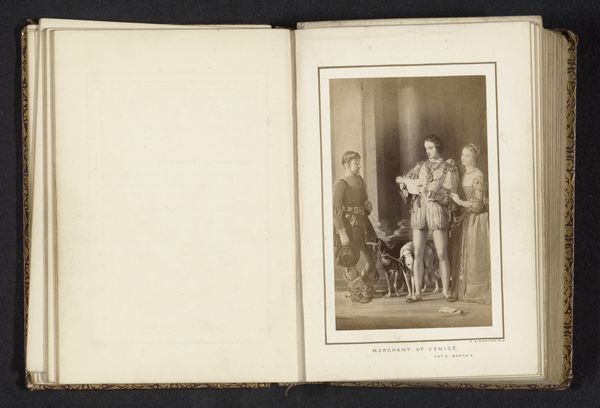
photography
#
portrait
#
photography
#
realism
Dimensions: height 134 mm, width 95 mm
Copyright: Rijks Museum: Open Domain
Curator: What a striking piece. This is an 1880 portrait by H. Hirsch, titled “Portret van een onbekende vrouw zittend op een balkon"—Portrait of an Unknown Woman Sitting on a Balcony. It’s a photograph, a relatively common medium by then, but the subject and composition are quite compelling. Editor: I’m immediately struck by the woman’s posture; she’s on a balcony, poised but not exactly relaxed. The setting feels both intimate and performative. Curator: It’s interesting you pick up on that performative aspect. Photography at this time, even seemingly candid portraits, was often heavily staged. Consider the materials themselves. The photographic paper, the specific chemical processes used to develop the image—these were relatively new technologies influencing how identity was constructed and presented. Someone, likely a whole team, had to be involved in crafting this image. Editor: Absolutely. It also reflects societal constraints of the period; even her pose and clothing are revealing of the limited roles prescribed to women. Is she a symbol of leisure, wealth, or something else entirely? The very fact that she’s ‘unknown’ amplifies this feeling. It allows us to consider what kinds of images and bodies were memorialized and why, especially through these burgeoning mass mediums. Curator: That's an excellent point about representation. Mass mediums definitely have power. The Realist style that’s assigned to the image further emphasizes its supposed objectivity. In examining the materials, we could also think about the accessibility of photography during this era. It’s realism, yes, but mediated realism—filtered through a specific economic and technological lens. How did the proliferation of photographic studios shape class and social dynamics? Who was commissioning and consuming these images, and what kind of labour did they involve? Editor: And how were these images used and circulated? How does that impact perceptions of gender, class, and race? Was it used as personal memento, or even for anthropological documentation, which was, not uncommon. It encourages questions of social power—who gets seen, how they're seen, and by whom. Even what counts as 'real' versus 'artificial' here in representation of reality is up for debate. Curator: So, when we examine this image closely, beyond simply aesthetic appreciation, it becomes clear photography in 1880 was not just about capturing likeness. Editor: Exactly. It's about reflecting and reinforcing prevailing social and material realities and power structures, which should challenge our initial impressions of such portraiture.
Comments
No comments
Be the first to comment and join the conversation on the ultimate creative platform.
